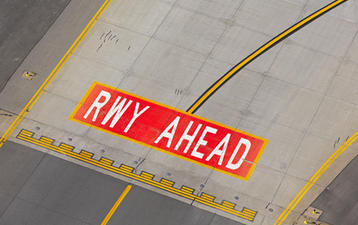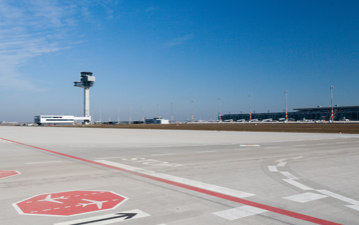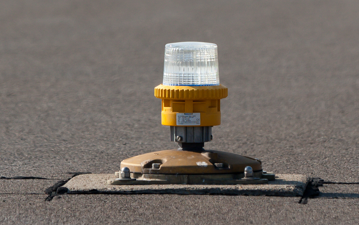Remote gap-analysis and compliance audits for airports
Certified aerodromes shall demonstrate and continually monitor compliance with applicable requirements through audits and inspections. This shall ensure that the procedures defined in the manuals (e.g. Aerodrome Manual) are applied in day-to-day operations within the organization and are aligned with internationally recognised best-practices - which are not prescribed by the before mentioned regulations.
airsight is offering gap-analysis, inspection services and compliance audits for aerodromes and civil aviation authorities, on-site or off-site, on a worldwide basis. Recent clients for these services include authorities (e.g. Seychelles CAA), international airports (Aéroports du Cameroun, Luxembourg) and of course numerous German Airports (Hannover, Frankfurt-Hahn, Frankfurt Main Airports, Dusseldorf Airport).
Gap-analysis or full compliance audits?
All airports and CAAs are unique, and so are their needs in terms of compliance – and budget.
While a full compliance audit has the ultimate objective to directly verify the airport’s compliance to all individual applicable requirements, the scope of a gap-analysis is generally restricted to a non-exhaustive subject area, to a subset of key criteria or requirements, or simply “time-bound”.
In terms of cost, a gap-analysis is certainly a better first option to price-sensitive clients – but does not replace a full compliance audit at a later stage.
On-site and off-site – or fully remote?
An aerodrome compliance audit generally consists in a review of the documentation followed by structured interviews with responsible personnel. Both can be performed on-site and off-site, but more and more clients ask for full remote services, to meet budget and timeline.
The documentation review is traditionally performed by consultants off-site, as it presents the most time-consuming task. Inspectors or auditors assess for example existing records from previous audits from authorities or the compliance department, e.g. documented inspections, identified findings and hazards, occurrences, incident investigations, safety assessments, training records, results of emergency exercises etc.
The structured interviews – which are nowadays often conducted via teleconference – aim to validate how the documented procedures are applied in day-to-day operations within the organisation, clarify any inconsistencies or issues, assess the knowledge of personnel, identify areas of good performance and improvements, and where applicable: confirm the validity of findings identified within the documents’ review. Some of the main advantages of remote audits are that no travel costs occur and the interview scheduling is more flexible.
The hidden cost of saving on compliance audits
There is an inherent risk of perceiving external compliance audits as a “commodity”, i.e. select consultants solely based on price and assuming the services quality and expertise of consultants is standardised.
In only a few industries the cost of an error related to auditing may be as important as in aviation: it is not rare to experience regulators stopping in last-minute the entry into service of complex air-traffic control equipment due to missing evidence of compliance. At the opposite, a misinterpretation of the regulations can induce very high and unnecessary infrastructural investments.
An experienced team of auditors and supportive experts in different field is therefore invaluable.
An audit is often more than “just compliance” - a desirable outcome is to identify areas of excellence or good practices, as well as weaknesses and develop recommendations on how to improve both the safety and efficiency of airport operations and infrastructure. Experienced consultancy firms such as airsight do not work in terms of “ticking boxes” but look for practicable solutions with their clients – and the regulator. A key-element is, notably in Europe, how to use the “flexibility tools” developed by EASA to manage incompliances, i.e. Special Conditions (SC) for permanent deviations, Deviations Acceptance and Action Document (DAAD) for temporary ones, and the use of Alternative Means of Compliance (AltMoC).
Is your competent authority really competent?
Aerodrome regulations are extremely complex, and it is difficult to maintain the level of knowledge and practice required to perform inspections. This notably applies to smaller countries’ authorities responsible for only a few or a single aerodrome.
While competent authorities are generally competent, the cost of maintaining the necessary internal qualifications is high, and there will always be some subjects “too technical” (e.g. airfield ground lighting, winter operations, rescue and firefighting, ATC) to have the required expertise. For this reason, more and more CAAs are turning to airsight to support them with their aerodrome audits and inspections.
Contact us!
Many international airports and CAAs have benefited from our expertise to meet their legal obligations in a time and cost-efficient manner. Our projects range from short specialised audits to "all-inclusive" full audit programmes for airports of all sizes. Contact us for a quote!
Key Facts



